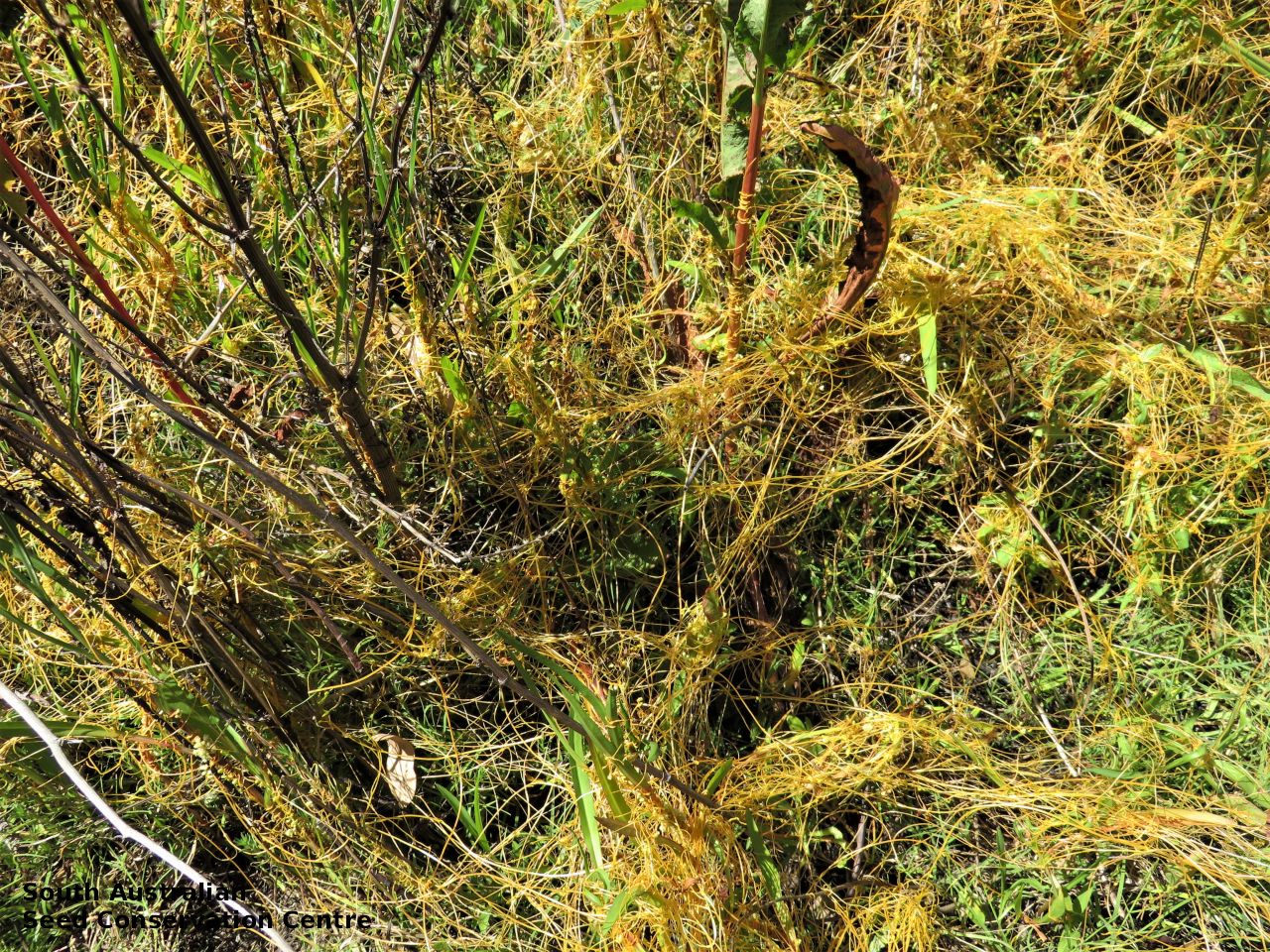
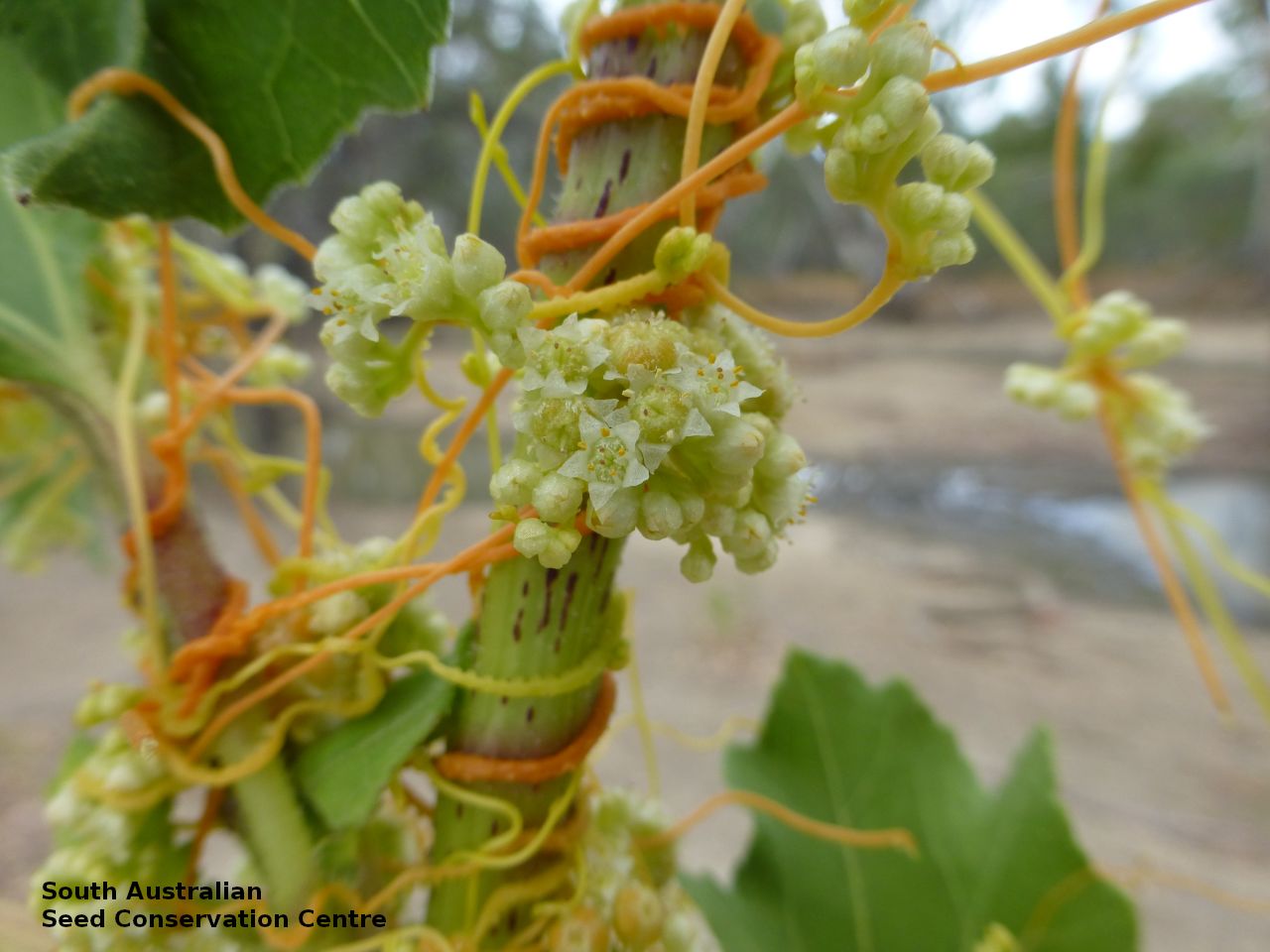
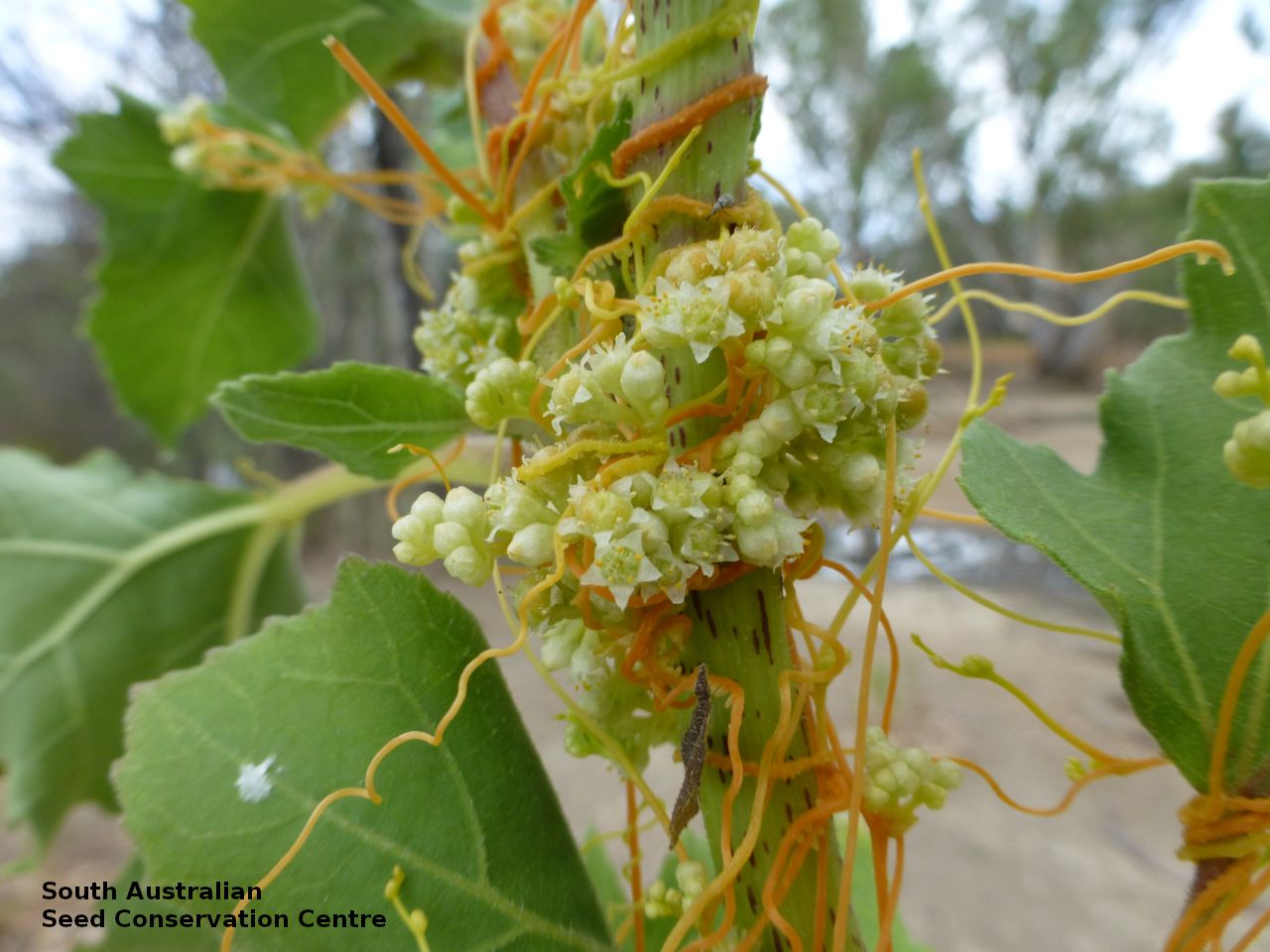
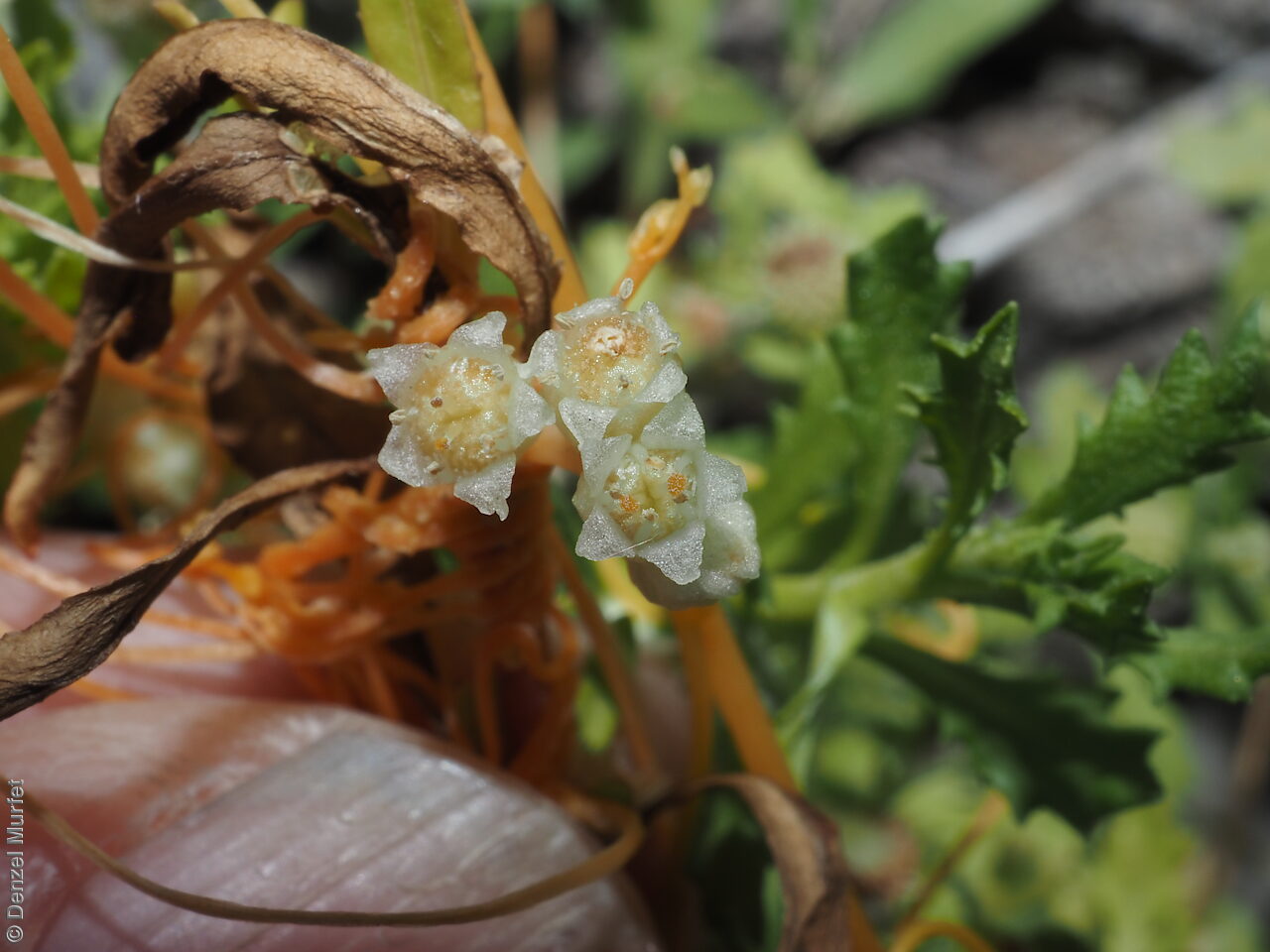
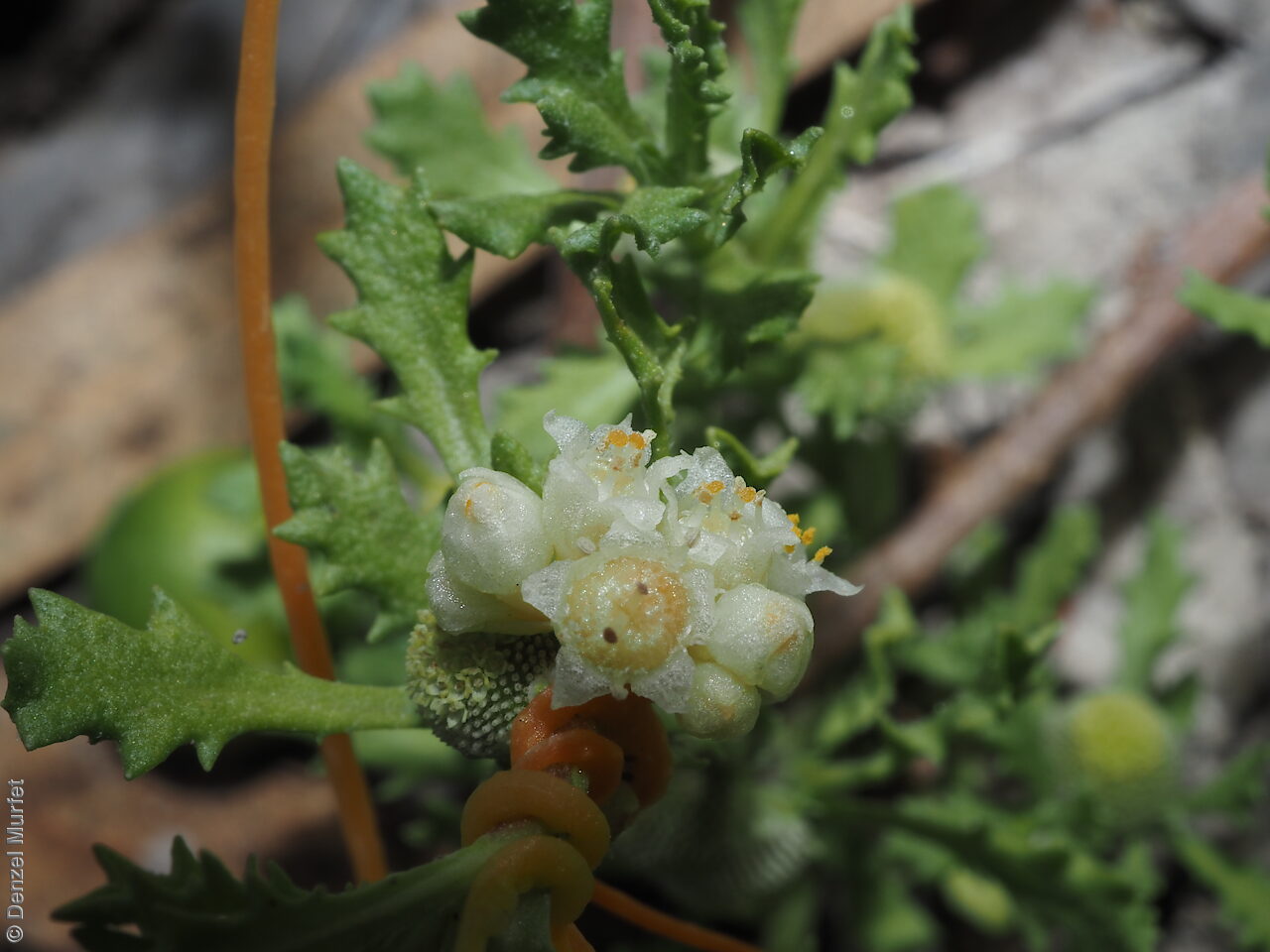
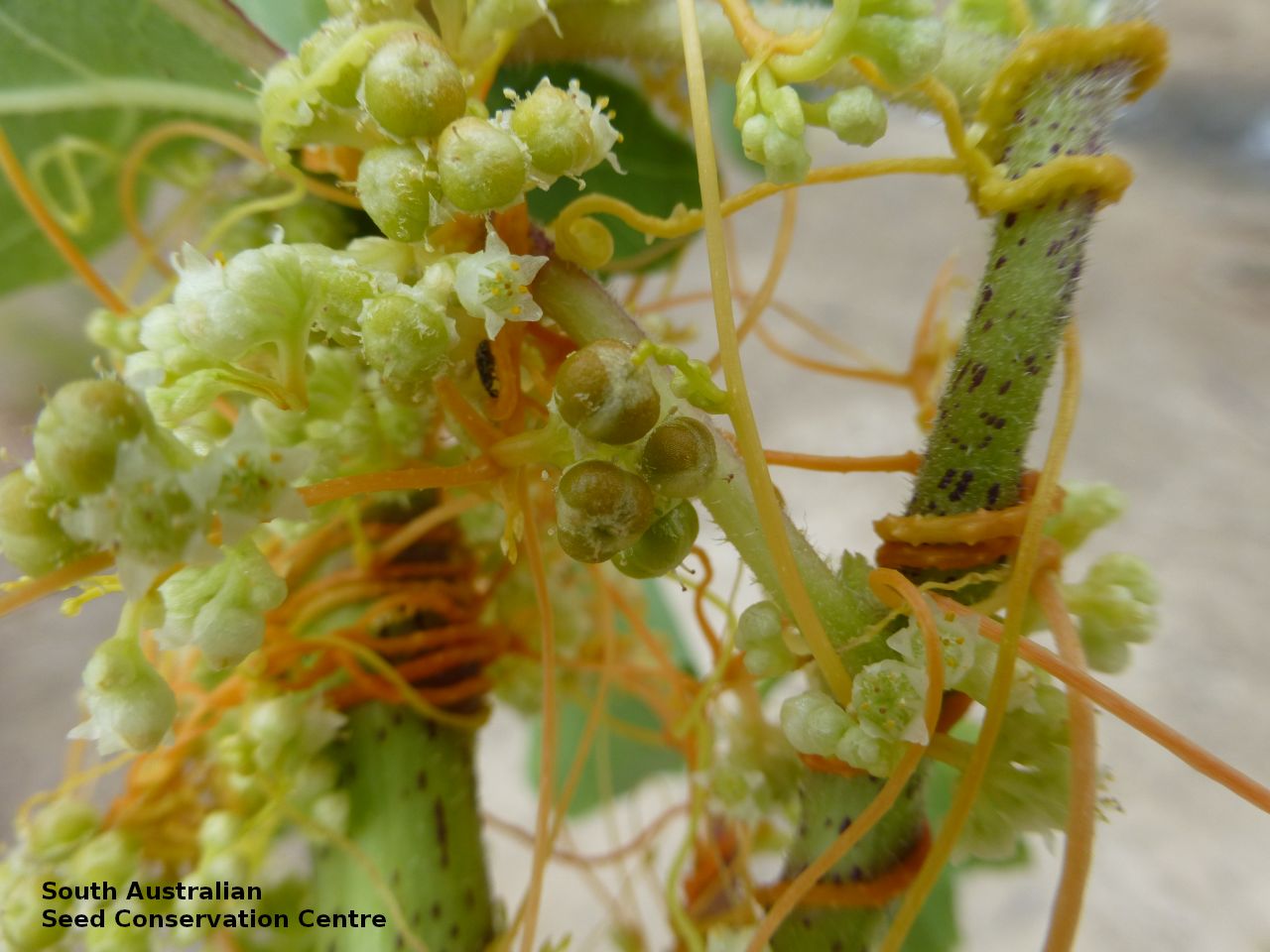
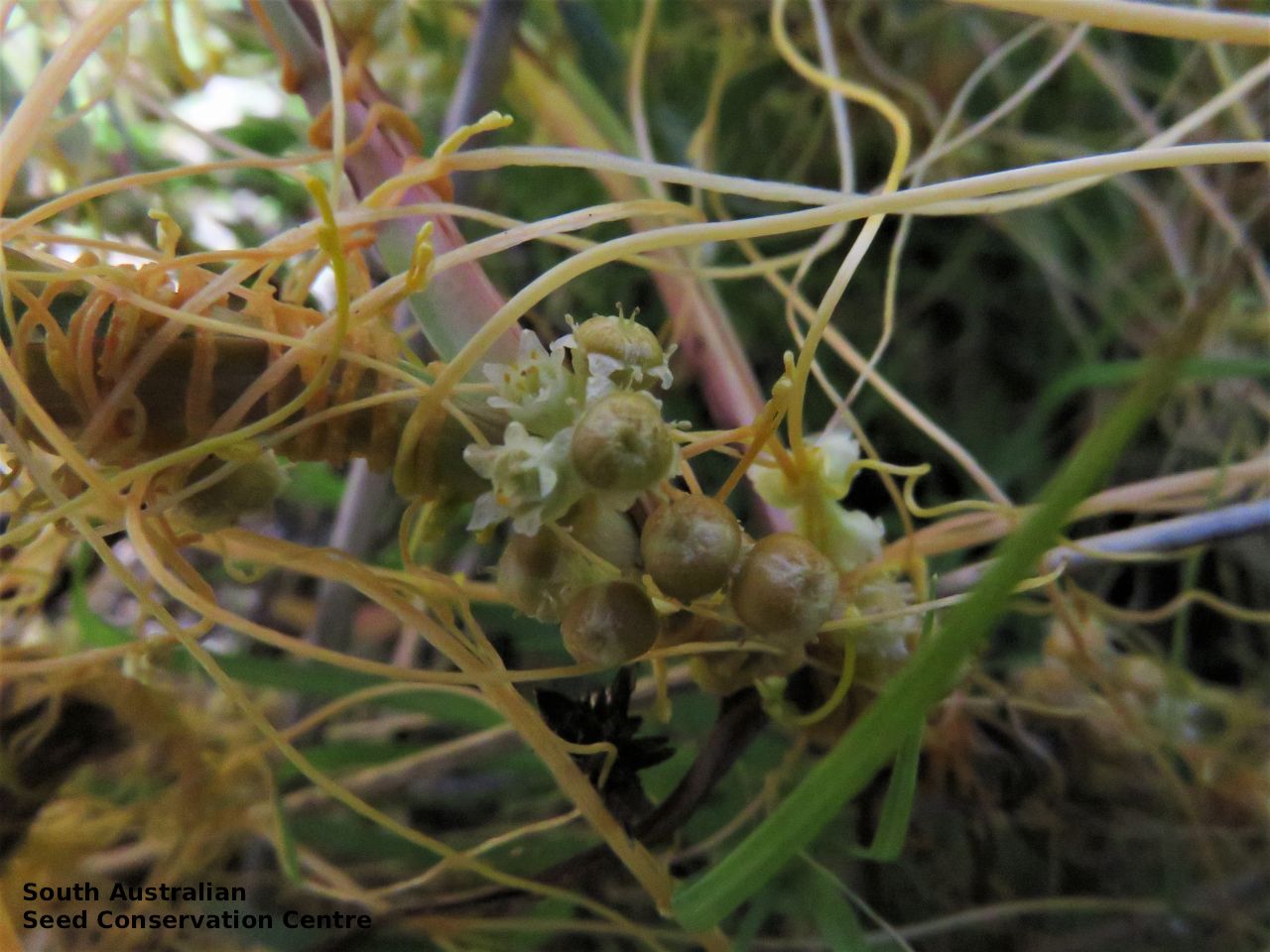


Botanical art
Common names
Field Dodder
Golden Dodder
Etymology
Cuscuta from the Italian and Neo-Latin 'cuscuta', which is from the Arabic 'kushuta' meaning to bend; referring to the twining habit of the stem. Campestris from Latin pertaining to plains or meadows; alluding to the species original habitat.
Distribution and status
Found in the southern Mount Lofty Ranges, along the Murray River and in the upper South-east in South Australia. Also found in all states except in the Northern Territory. Naturalised. Common in South Australia. Uncommon in Western Australia and Tasmania. Common in the other states.
Herbarium regions: Murray, Southern Lofty, South Eastern, Green Adelaide
NRM regions: Adelaide and Mount Lofty Ranges, South Australian Murray-Darling Basin, South East
AVH map: SA distribution map (external link)
Plant description
A leafless, twining, parasitic herb forming dense mats of growth over other plants, usually short-lived however can live for more than one year if it is attached to a long-lived host plant. Twining and branching stems are pale yellow, greenish-yellow, golden yellow or orange in colour. Inflorescent in dense clusters with yellow-green flowers. Flowering between December and April. Fruits are golden brown globular capsule to 4 mm diameter, containing up to 4 seeds. Seeds are brown, yellow or grey globular seed to 2 mm long, surfaces roughened. Seed embryo type is folded.
Seed collection and propagation
Collect seeds between January and June. Collect capsules that are maturing, turning brown and contain hard seeds inside. Place the capsules in a tray and leave to dry for one to two weeks. Then rub the capsules gently by hand or with a rubber bung to dislodge the seeds. Use a sieve to separate the unwanted material. Store the seeds with a desiccant such as dried silica beads or dry rice, in an air tight container in a cool and dry place.